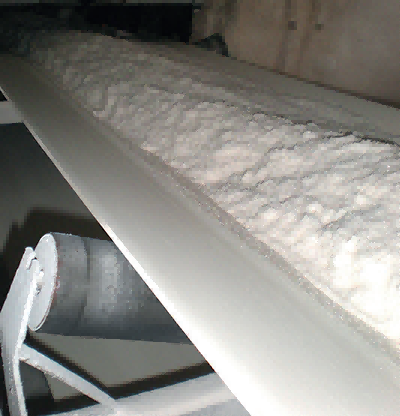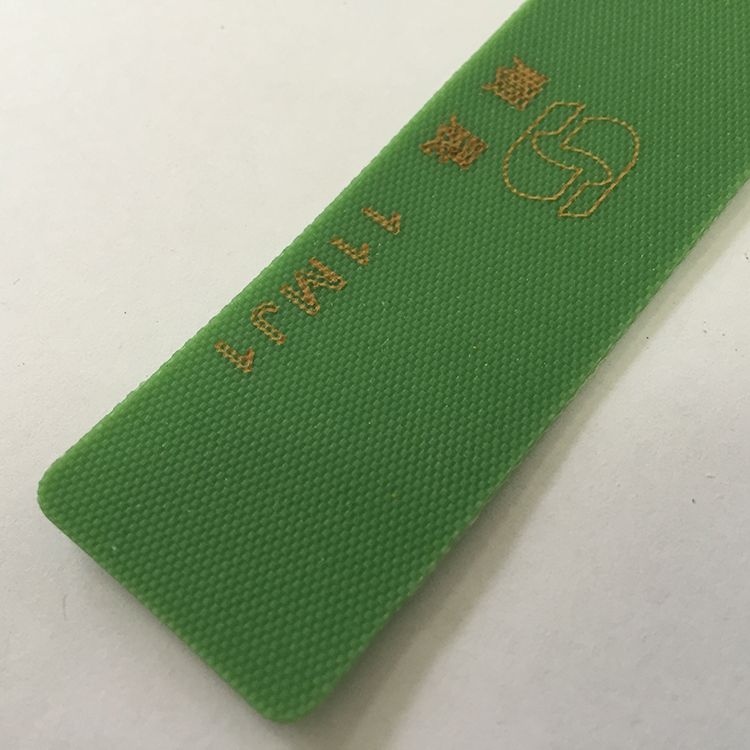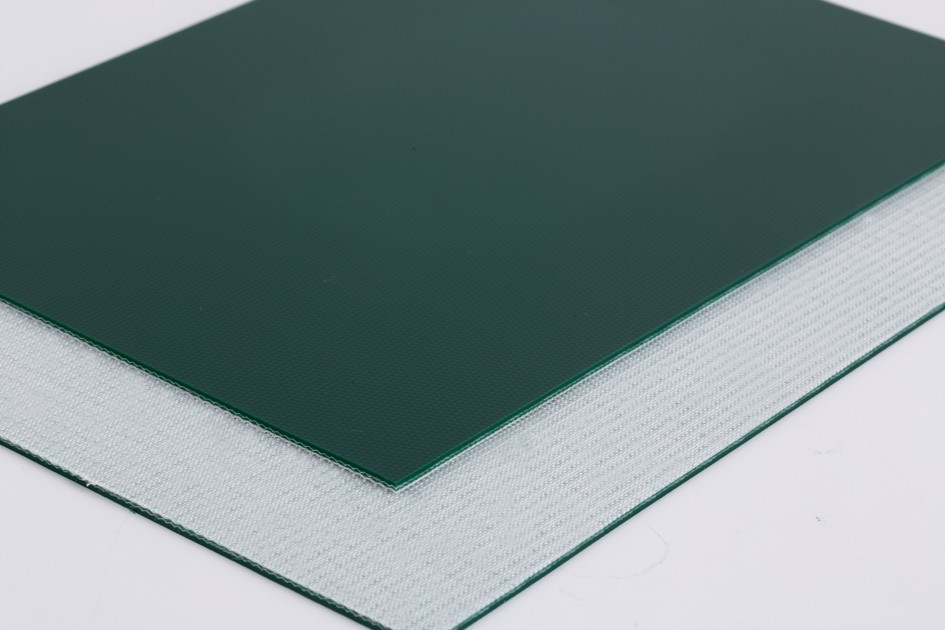Introduction
Polypropylene 1.5-inch conveyor belts stand as indispensable assets in industrial setups, offering durability, flexibility, and resilience to varied conditions. This article delves into the unique properties that make these belts ideal for demanding industrial environments and their significance in enhancing operational efficiency.

Durability of 1.5-Inch Polypropylene Conveyor Belts
- Material Composition and Robustness
Polypropylene, known for its durability, serves as the foundation of these conveyor belts. Its structural integrity and resistance to wear and tear make it a reliable choice for withstanding heavy loads and continuous operations.
- Strength and Tensile Properties
The belt’s design ensures impressive tensile strength, allowing it to endure rigorous stresses without compromising its structural integrity. This quality ensures prolonged service life, even in the face of demanding industrial applications.
- Resistance to Wear and Abrasion
Polypropylene’s innate resistance to wear and abrasion enables these belts to maintain their effectiveness over extended periods, reducing the need for frequent replacements and enhancing cost-efficiency.
Flexibility in Industrial Applications
- Adaptability to Diverse Conveyor Systems
The 1.5-inch width of these belts offers versatility, fitting various conveyor setups across industries. Their adaptability facilitates seamless integration into different operational configurations.
- Conformance to Varied Surfaces and Contours
The belts’ inherent flexibility enables them to conform effortlessly to different surfaces and contours, ensuring smooth material handling, reducing spillage, and enhancing operational efficiency.
- Impact on Operational Efficiency
The flexibility of these belts directly influences operational efficiency by minimizing jams, improving material flow, and facilitating smoother processes in diverse industrial environments.
Resistance to Various Conditions
- Chemical Resistance
Polypropylene 1.5-inch conveyor belts exhibit robust resistance to chemicals, oils, and solvents typically encountered in industrial settings, safeguarding against corrosion and degradation.
- Temperature Tolerance
Their ability to withstand a wide range of temperatures ensures consistent performance, even in environments with extreme heat or cold, making them adaptable to diverse operational conditions.
- Moisture and Environmental Resistance
The belts’ resilience against moisture, humidity, and environmental elements ensures reliable performance in outdoor settings and areas prone to moisture exposure.
Performance in Demanding Industrial Environments
- Applications in Heavy Industries
These belts find extensive use in heavy industries such as mining, manufacturing, and logistics, where their durability and resilience are critical for sustained operations.
- Stress Tests and Endurance
Through rigorous stress tests, these belts have demonstrated exceptional endurance, maintaining structural integrity and functionality under heavy loads and continuous operational cycles.
- Case Studies and Success Stories
Highlighting instances where 1.5-inch polypropylene conveyor belts have significantly enhanced productivity and operational efficiency in challenging industrial environments.
Maintenance and Best Practices
Regular Inspection and Cleaning Routine
To ensure optimal performance and longevity, conduct regular inspections of the 1.5-inch polypropylene conveyor belts. Inspect for wear, tears, or any signs of damage. Implement a systematic cleaning regimen using suitable cleaning agents that don’t compromise the integrity of the belt. Remove debris, dust, or material buildup that could affect belt functionality.
- Belt Alignment and Tension Adjustment
Periodically check the belt alignment and tension. Misaligned belts can cause uneven wear and reduced efficiency. Adjust the belt tension according to manufacturer recommendations to prevent slippage or excessive strain on the drive system. Proper tension helps maintain efficient operation and extends the belt’s lifespan.
- Addressing Potential Issues Promptly
Address any issues promptly to prevent further damage. Repair minor damages immediately to avoid exacerbation. Use compatible repair materials or seek professional assistance if significant damage occurs. Early intervention can prevent downtime and costly repairs, ensuring continuous operations.
- Lubrication and Preventive Maintenance
For conveyor systems with moving parts, such as pulleys or bearings, follow manufacturer guidelines for lubrication schedules. Proper lubrication reduces friction, prevents overheating, and prolongs the life of moving components. Establish a preventive maintenance plan, including regular inspections, lubrication, and component replacement based on wear patterns or manufacturer recommendations.
- Training and Safety Measures
Train personnel handling the conveyor systems in proper maintenance procedures and safety protocols. Educate them on safe operating practices, including shutdown procedures during maintenance, wearing appropriate personal protective equipment (PPE), and handling tools and equipment safely. Prioritize safety to prevent accidents and ensure a secure working environment.
- Environmental Considerations
Consider environmental factors that might affect the belt’s performance. In environments with extreme temperatures, moisture, or exposure to corrosive substances, adjust maintenance schedules accordingly. Implement preventive measures to protect the belts from adverse environmental conditions, such as utilizing covers or shields where appropriate.
- Record-Keeping and Documentation
Maintain detailed records of maintenance activities, inspections, repairs, and replacements. Documenting maintenance schedules and observations aids in identifying trends, predicting potential issues, and scheduling proactive maintenance. Use this information to refine maintenance practices and improve overall system reliability.
- Professional Assistance and Expert Consultation
When uncertain about maintenance procedures or encountering complex issues, seek assistance from qualified professionals or the manufacturer. Consulting experts ensures that maintenance is carried out correctly, minimizing risks and maximizing the conveyor belt’s efficiency and lifespan.
Conclusion
Summarizing the robustness of 1.5-inch polypropylene conveyor belts in demanding industrial environments, highlighting their durability, flexibility, and resistance to various conditions. Reinforcing their significance in ensuring operational efficiency and reliability across diverse industrial applications.
This comprehensive article demonstrates how 1.5-inch polypropylene conveyor belts offer durability, flexibility, and resilience in demanding industrial settings, addressing their unique properties, performance, applications, maintenance, and significance in enhancing operational efficiency.





